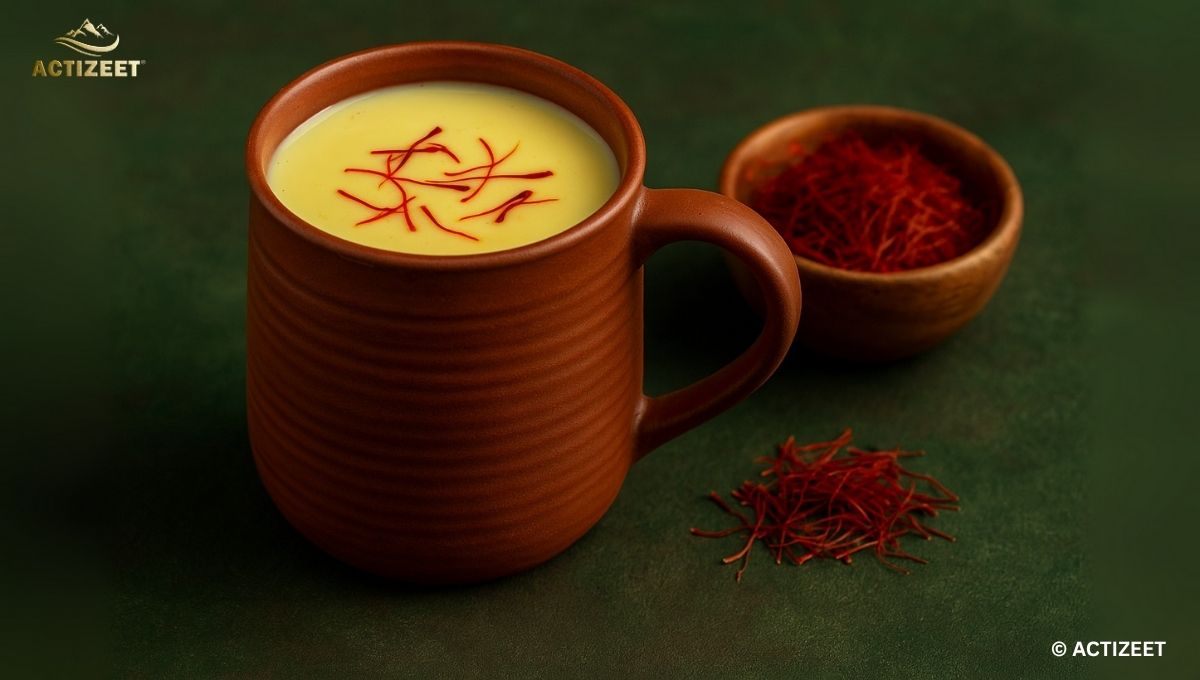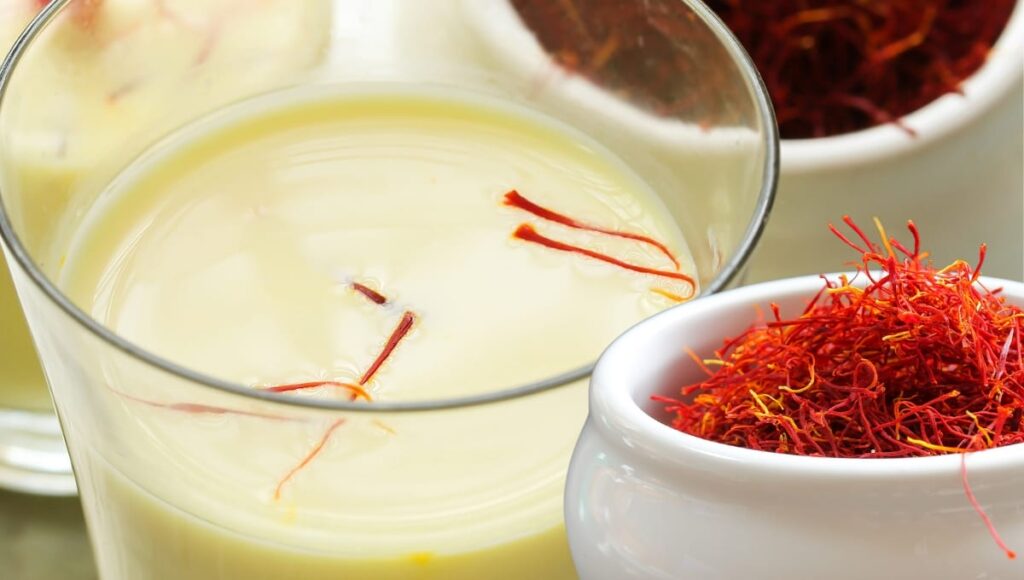It’s Not Just Milk Anymore—It’s Tradition in a Glass
The sun’s about to set. You’re home after a long day. The aroma of warm milk fills the air—soft, calming, nostalgic. You stir a few strands of Kesar (saffron) into it, and suddenly, it’s not just milk anymore.
It’s comfort. Healing. A moment of pause. A timeless Indian ritual.
But here’s the question that lingers for many—how much Kesar should you actually add to milk?
Too little, and you might miss the benefits.
Too much, and you risk overpowering the taste—or worse, overdoing it.
Let’s unravel the magic of Kesar Doodh together—and discover how much is just right.
Why Add Kesar to Milk in the First Place?
Before we dive into the quantity, it’s important to understand why Indians have added saffron to milk for centuries.
Kesar, or saffron, is the world’s most expensive spice, but it’s worth every strand. Especially when blended with milk, it becomes a powerhouse of healing.
Here’s what Kesar milk can offer:
- Improved digestion
- Enhanced skin glow
- Better sleep
- Hormonal balance
- Immunity boost
- Reduced stress and anxiety
- Support during pregnancy
It’s like Ayurveda’s golden elixir, passed down by mothers and grandmothers across Indian homes.
So, How Much Kesar to Put in Milk?
✅ General Daily Use (Adults)
Dosage:
🟠 3 to 5 saffron strands (approx. 15–20 mg) per glass (250 ml) of warm milk
This amount is ideal for:
- Daily wellness
- Glowing skin
- Better digestion
- Improved mood and sleep
✅ Best Time: Evening or night, about an hour before bedtime
✅ For Children
Dosage:
🟠 1 to 2 saffron strands per glass (200 ml) of warm milk
For kids, saffron should be introduced in small amounts, preferably after the age of 1. It helps in:
- Brain development
- Better sleep
- Improved appetite
✅ Tip: Soak the strands in water or milk before adding, to make them easier to digest.
✅ For Pregnant Women
Dosage (After First Trimester):
🟠 2 to 4 strands per glass of milk
Many Indian mothers are advised to drink Kesar milk during pregnancy to:
- Reduce mood swings
- Aid digestion
- Improve baby’s complexion (a cultural belief, though not scientifically proven)
- Promote better sleep and calmness
⚠️ Always consult your doctor before starting Kesar milk during pregnancy.
✅ For Skin Glow and Beauty
Dosage:
🟠 3 to 6 strands per glass of milk
Kesar is loaded with antioxidants that:
- Improve skin texture
- Brighten complexion
- Fight signs of aging
Pair it with raw milk and drink it regularly—or use it in face packs for added glow.
✅ For Strength and Immunity
Dosage:
🟠 5 to 7 strands per glass
Perfect for athletes, elderly individuals, or those recovering from illness. Combine with:
- A pinch of turmeric
- Crushed almonds or dates
- Desi ghee (for muscle and joint support)
How to Prepare Perfect Kesar Milk – Step-by-Step
- Soak 3–7 saffron strands in 2 tablespoons of warm milk (or water) for 10–15 minutes. This helps release color, aroma, and nutrients.
- Boil 1 glass (250 ml) of milk separately.
- Add the soaked saffron to the hot milk.
- Optional:
- Add a pinch of cardamom for flavor
- Use raw honey or jaggery (if needed) for natural sweetness
- Stir in some crushed almonds or pistachios
- Serve warm. Breathe in the aroma. Sip slowly.
More Than a Drink, It’s a Blessing
Ask any Indian mother what Kesar milk means to her.
She won’t say “a spice and a drink.”
She’ll say—“Shanti. Raksha. Pyaar.” (Peace. Protection. Love.)
It’s what she offers when you’re sick.
What she gives before exams.
What she prepares when you’re getting married.
What she drinks when she’s expecting.
Kesar milk is woven into the emotions of Indian life.
And when you prepare it with the right quantity, you preserve that sacred balance—of taste, tradition, and health.
Frequently Asked Questions
❓ Can I take Kesar milk every day?
Yes, 3–5 strands daily are safe and beneficial. It’s a gentle, nourishing tonic.
❓ When is the best time to drink it?
Nighttime is ideal—it promotes relaxation, supports digestion, and enhances sleep.
❓ Can I take Kesar with cold milk?
While you can, warm milk is traditionally preferred for better absorption and comfort.
❓ Is there such a thing as too much saffron?
Yes. More than 10–15 strands per day over a long time may lead to toxicity, headaches, or dizziness. Stick to 3–7 strands for daily use.
❓ Does saffron really make babies fair?
While it’s a common belief in India, there’s no scientific evidence that saffron influences skin complexion. But it does support the mother’s wellbeing, which indirectly benefits the baby.
Why ACTIZEET Kesar is Different
Most store-bought saffron is:
- Adulterated with dyed fibers
- Old and stale
- Chemically treated
- Weak in aroma and nutrients
ACTIZEET Kesar is:
🌸 100% Pure Kashmiri Mongra Saffron
🌸 Lab-tested for authenticity
🌸 Harvested by hand from Pampore, Kashmir
🌸 Deep red threads, rich aroma, and strong coloring power
🌸 No additives, no chemicals
When you’re putting saffron in your milk—you deserve purity. Every strand matters.
The Golden Thread That Binds Generations
You might be holding a few delicate strands in your hand.
But what you’re really holding… is centuries of Indian wisdom.
From the Vedic sages to your grandmother’s kitchen, Kesar milk has been the silent witness to growth, health, and sacred moments.
Now it’s your turn. To stir the strands. To inhale the aroma. To drink deeply from this golden legacy.
And all it takes is just the right pinch.
Ready to Experience the ACTIZEET Difference?
Try ACTIZEET Kesar Today and Turn Your Daily Milk into a Wellness Ritual.
Latest From Our Blog
How Kesar Is Made: A Step-by-Step Guide to Saffron Production
Learn how kesar is made, from the cultivation of Crocus...
Saffron For Pregnancy: In-Depth Information
Learn how saffron can give you relief from morning sickness...
Saffron for Skin: The Golden Secret to a Radiant Glow
Discover the power of saffron for skin! Learn how kesar...
Understanding Kesar Price: Factors, Trends, and Buying Tips
Discover insights about "kesar price," including factors influencing its cost,...









